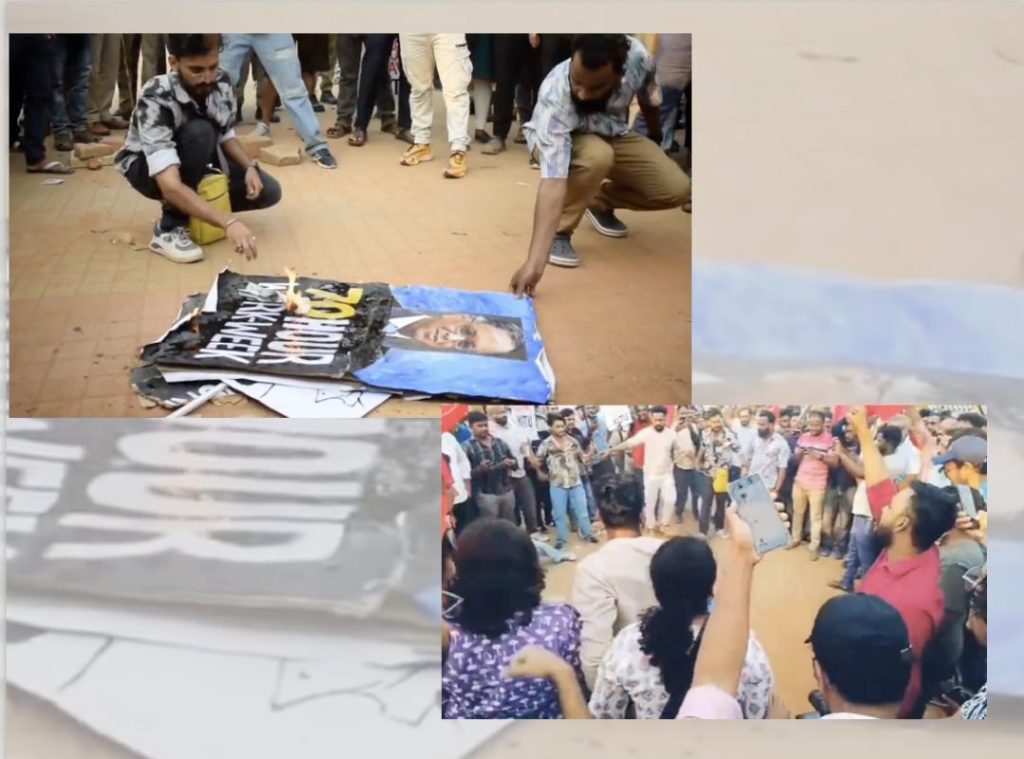
IT Employees Burn Murthy, L&T Chief’s Effigies for Proposing Longer Workweeks
In a bold show of protest, IT employees in Bengaluru burnt effigies of Infosys Founder Narayana Murthy and L&T Chairman SN Subrahmanyan, condemning their proposal to increase work hours for employees. The protest, organized by the Karnataka IT Union (KITU), an IT employees’ union in Karnataka, against exploitative work practices, was met with a strong response from the Bengaluru Police, who attempted to stop the employees from burning the effigies.
The controversy began when Narayana Murthy, the co-founder of Infosys, suggested that employees should be willing to work 70-hour workweeks to stay competitive in the industry. He made this statement while speaking at a conference in Bengaluru, where he emphasized the importance of long working hours to drive innovation and growth. However, his statement was met with widespread criticism from employees, who felt that it was unrealistic and exploited.
Subrahmanyan, the Chairman of Larsen & Toubro (L&T), further fueled the controversy by suggesting that employees should be willing to work 90 hours a week to achieve success. His statement was seen as an attempt to justify the long working hours that were already prevalent in the industry.
In response to these statements, the Karnataka IT Union (KITU) decided to organize a protest against exploitative work practices in the IT industry. The protest, which was held in Bengaluru, saw IT employees gather at the Freedom Park in the city, where they burnt effigies of Murthy and Subrahmanyan.
Despite the attempts by the Bengaluru Police to stop the employees from burning the effigies, the protest went ahead as planned. The police had tried to block the entrance to the park, but the employees managed to find alternative routes to reach the park and participate in the protest.
The protest was peaceful, with employees chanting slogans and holding placards denouncing the exploitative work practices in the IT industry. The employees also handed out pamphlets to passersby, highlighting the issues faced by them due to long working hours.
The protest was a significant show of solidarity among IT employees, who are often criticized for being overworked and underpaid. The employees felt that the proposals made by Murthy and Subrahmanyan were an attempt to justify the exploitation of workers, and that it was essential to stand united against such practices.
The Karnataka IT Union (KITU) has been vocal about the issues faced by IT employees in the state. The union has been demanding better working conditions, including shorter working hours, better salaries, and more benefits for employees.
The protest against Murthy and Subrahmanyan’s proposals is a significant milestone in the struggle for better working conditions in the IT industry. It shows that employees are willing to stand up for their rights and demand fair treatment from their employers.
In conclusion, the protest by IT employees in Bengaluru against Murthy and Subrahmanyan’s proposals is a significant development in the struggle for better working conditions in the IT industry. The employees’ decision to burn effigies of the two industry leaders is a bold show of solidarity against exploitative work practices, and it sends a strong message to employers that employees will not tolerate such practices.




